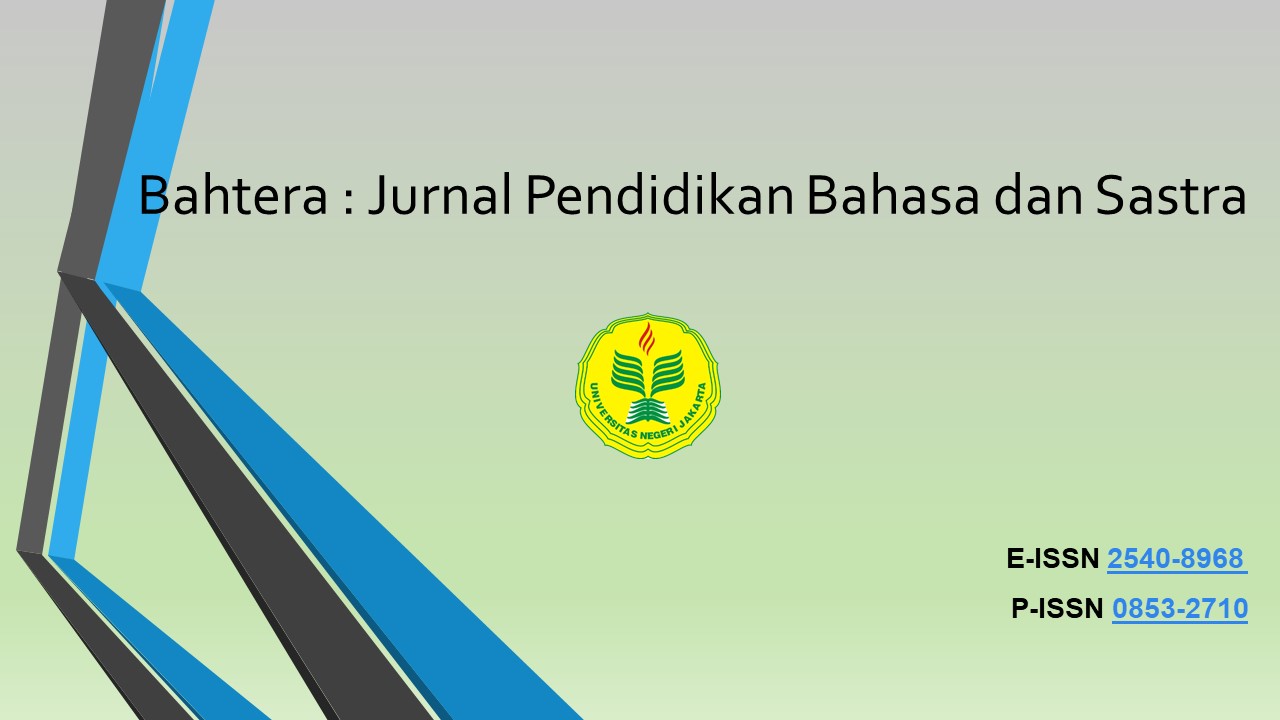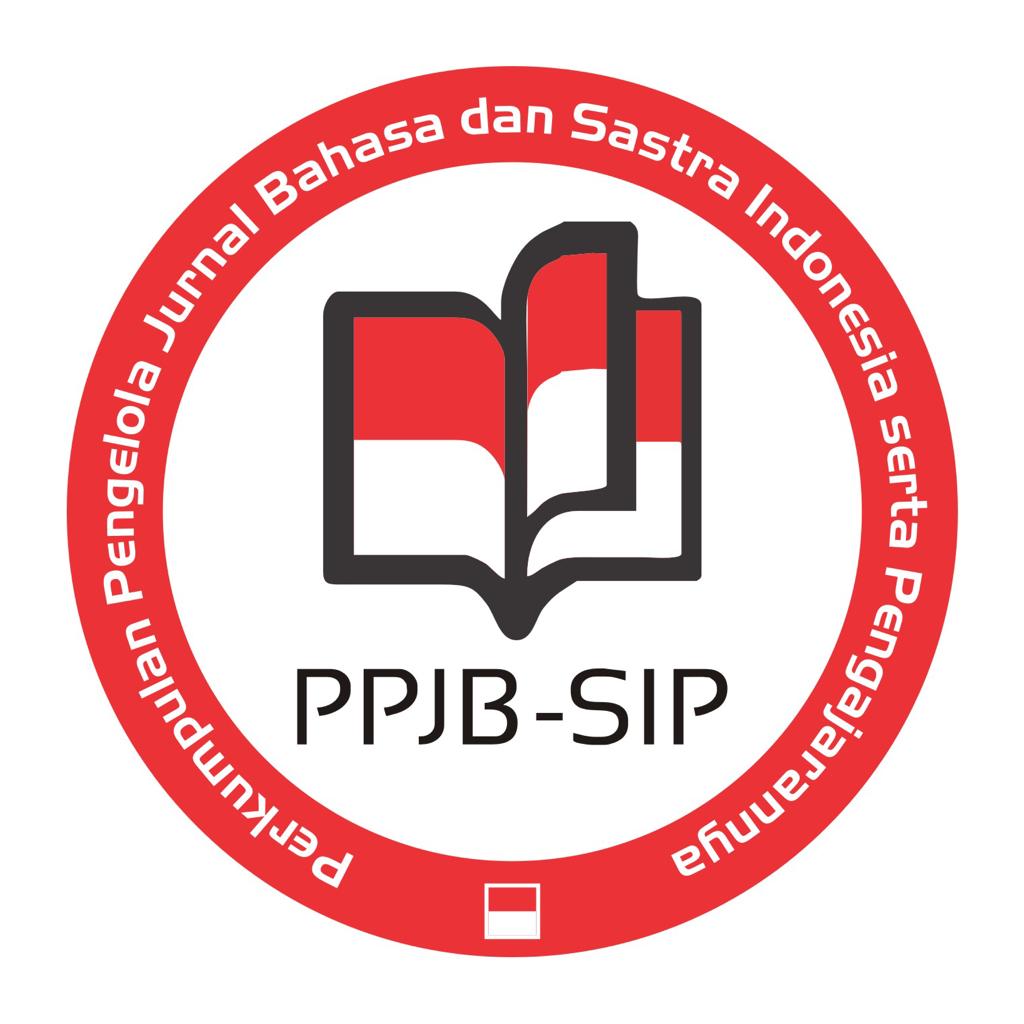SEPULUH UNSUR PENGOPTIMAL METODE DRIL DAN PENGUASAAN HAFALAN BAHASA MANDARIN KOMPREHENSIF
DOI:
https://doi.org/10.21009/bahtera.222.08Keywords:
Drill Method, Ten Constituent Elements, Memorization of Mandarin MaterialAbstract
This study discusses the advantages and optimization of the drill method in the memorization process for mastery of Mandarin. The drill method that does not require additional media, and only relies on the five human senses is an advantage that deserves to be maximized. This study aims to offer ten elements that can encourage better results in the process of memorizing Mandarin with the drill method. By using qualitative research methods, elements, such as, relying on continuity, familiarizing with Mandarin language culture, determining the appropriate mindset for improving mastery of Mandarin memorization with the dril method, are a summary of the results in the elements offered and in the discussion will be presented with in-depth elaboration.
References
Adhimas, Y. B., Masrur, M. F., Subandi, S., Dasion, H. Y. T., Arista, C., & Aditya, R. (2023). Deixis in Chinese Written Discourse Text in Daily Newspaper 国际日报 Guoji Ribao. 1908–1919. https://doi.org/10.2991/978-2-38476-008-4_207
Alif, D., Dzakiyyah, T., Kurniawan, D., & Ventivani, A. (2021). Pengaruh Metode Latihan Drill terhadap Kemampuan Membaca Mahasiswa Angkatan 2018 Prodi Pendidikan Bahasa Mandarin Universitas Negeri Malang. JoLLA: Journal of Language, Literature, and Arts, 1(9), 1188–1200. https://doi.org/10.17977/UM064V1I92021P1188-1200
Auliasari, M. M. (2022). ANALISIS PEDAGOGIC ACTIVITIES DALAM KELAS DARING BAHASA MANDARIN. NUSANTARA : Jurnal Ilmu Pengetahuan Sosial, 9(6), 2111–2119. https://doi.org/10.31604/JIPS.V9I6.2022.2111-2119
Helena, W. M., & Yulianto, B. (2019). KIDS LEARN MANDARIN: Media Interaktif untuk Pembelajaran Bahasa Mandarin pada SDK Santa Theresia 1 Surabaya. Prosiding Seminar Nasional Linguistik Dan Sastra (SEMANTIKS), 1(0), 530–542. https://jurnal.uns.ac.id/prosidingsemantiks/article/view/39074
Hermawan, B., Endang, L., & Apriana, M. (2020). Peran Media PPT untuk Peningkatan Minat Belajar dalam Pembelajaran Kosakata Bahasa Mandarin. Jurnal Penelitian Pendidikan, 20(2), 183–191. https://doi.org/10.17509/JPP.V20I2.26887
Lianisyah, U. Y., Sugiarti, T., & Rudiansyah, R. (2022). Analisis Motivasi dan Kesulitan Belajar Bahasa Mandarin Mahasiswa Indonesia non-Keturunan Tionghoa di Universitas Sebelas Maret Indonesia. Jurnal Cakrawala Mandarin, 6(2), 48–55. https://doi.org/10.36279/APSMI.V6I2.189
Mat, A. C. (2010). SITUASI PEMBELAJARAN BAHASA ASING DI INSTITUT PENGAJIAN TINGGI - PERBANDINGAN ANTARA BAHASA ARAB, BAHASA MANDARIN DAN BAHASA PERANCIS. Asean Journal of Teaching and Learning in Higher Education, 9–21.
Pavlik, P., Bolster, T., Wu, S. M., Koedinger, K., & MacWhinney, B. (2008). Using optimally selected drill practice to train basic facts. Lecture Notes in Computer Science (Including Subseries Lecture Notes in Artificial Intelligence and Lecture Notes in Bioinformatics), 5091 LNCS, 593–602. https://doi.org/10.1007/978-3-540-69132-7_62/COVER
Pratama, F. Y., Wikarti, A. R., & Trihardini, A. (2022). Analisis Kesalahan Pelafalan Perubahan Tona “Bu” Bahasa Mandarin. Fenghuang: Journal of Chinese Language Education, 1(03), 23–32. https://journal.unj.ac.id/unj/index.php/fenghuang/article/view/29729
Vivian, C. (2016). Second language learning and language teaching: Fifth edition. Second Language Learning and Language Teaching: Fifth Edition, 1–334. https://doi.org/10.4324/9781315883113/SECOND-LANGUAGE-LEARNING-LANGUAGE-TEACHING-VIVIAN-COOK
Ying, Y., Nanang Suprayogi, M., & Afifah Hurriyati, E. (2013). Motivasi Belajar Bahasa Mandarin sebagai Bahasa Kedua. Humaniora, 4(2), 1345–1355. https://doi.org/10.21512/HUMANIORA.V4I2.3579
Downloads
Published
How to Cite
Issue
Section
License
License & Copyright
This work is licensed under a Creative Commons Attribution 4.0 International License.










